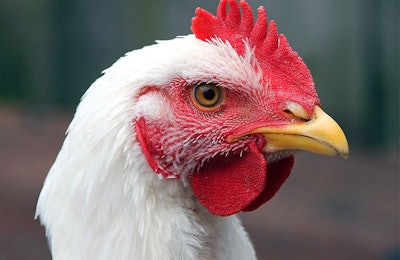
Proper lighting is essential to the success of poultry farming operations. New innovations in lighting technology can lower costs for farmers and improve welfare for birds.
As part of the virtual Pennsylvania Poultry Sales and Service Conference, held by The Pennsylvania State University’s College of Agricultural Sciences on September 15 and 16, 2020, Dr. Brian Fairchild, a professor and extension specialist at the University of Georgia’s Department of Poultry Science, shared insights on lighting strategies and the results of new research.

Dr. Brian Fairchild, University of Georgia
The role of lighting in bird health
Fairchild said lighting is one of the six basic needs of a broiler bird. Along with the right temperature, air quality, feed, water and protection from disease, birds need the proper amount of light and day length to live comfortably and perform their best.
Specifically, broiler growers need to pay attention to:
- The photoperiod, the number of hours of light per day.
- Light intensity, the brightness inside the house.
- Color temperature, the color of the light.
- The light source, what type of bulb is used to generate light.
Birds perceive light like humans but there are notable differences. They have more cones – the photoreceptor cells in the eye, which are responsible for perception of color and work best in bright light – meaning they see a wider range of light than humans. Additionally, chickens have organs in their brains that are photoreceptive and allow them to perceive night and day independently of the avian eye.
How birds react to light
Light causes physiological responses in the birds, too. Fairchild said chickens are seasonal breeders and they tend to breed when days are longer. Moreover, the light sensitive organs in their brains are stimulated by red light.
Research shows birds provided a dark period have less stress compared to those on continuous light. On a physiological level, the darkness allows the bird’s pineal gland to produce melatonin. That chemical plays a wide role in bird homeostasis.
Bird behavior is influenced by light, too. By lowering light intensity, the farmer can reduce physical activity, which can minimize aggressive behavior like scratching, and reduce the amount of energy the bird expends during the day.
Growers should strive to provide a uniform amount of light in the house, with less than 20% difference in light from the darkest point to the brightest point, especially during the brooding period. Uniform lighting is important during brooding as a means to prevent birds nesting in darker areas and sets them up for success throughout their lifecycle.
Light as a farm expense
Beyond the bird, light is important because of its cost of generation. Fairchild said natural gas and electricity account for about 60% of a poultry growers’ annual expenses. Lighting can account for 30% to 40% of electrical costs.
In general, research shows that light emitting diode (LED) lighting is the most energy efficient way to generate light for poultry houses, especially when compared with incandescent filament lighting and other sources.

Light emitting diode, or LED, lighting is the most energy efficient way to generate light for poultry houses. (BigPumba | Bigstock.com)
In a recent experiment, he and Michael Czarick, an extension engineer at the University of Georgia’s Department of Poultry Science, found a pullet house using LED lighting rather than incandescent light spent less on electricity, achieved greater light intensity and had near identical outcomes for hen weights and livability. In addition to less power usage, savings were realized by reducing the volume of purchasing and replacement of incandescent bulbs. None of the incandescent lights made it through three flocks of birds whereas the LED lights went on to last for more than five years.
Another experiment they conducted compared high pressure sodium (HPS) lights, using 150 watts to generate 15,800 lumens of light, with LED lights, using 40 watts to produce 8,000 lumens and 10 watts to produce 800 lumens, respectively in a breeder house. The operating costs were significantly lower with LED lights versus the HPS lights.
Recommendations for new construction
Based on what he’s observed in his work, Fairchild said a new poultry house built today should use three to four rows of LED lights. The spacing of those rows should depend upon the bulb used but for most LED bulbs should be no further apart than 15 feet. He recommended using a 2,700 to 5,000 Kelvin bulb – Kelvin (K) is used as a measure of light temperature, perceived as color, with a higher number corresponding to a cooler color light and a lower number corresponding to a warmer color – for broilers. With breeders, he recommended using 2700K to 3000K in order to generate more of the beneficial red and orange light.
A drawback of using LED bulbs he noted is their poor or inconsistent dimming performance versus other types of bulbs. This can create different light levels based on the controller and the dimmer used in the house.
Bulb purchasing tips
Fairchild said buyers shopping for new light bulbs for their poultry house should try and find a product with all the following features:
- More than 60 lumens per watt.
- A color between 2700-5000K for broilers and between 2700-3000 for pullets and breeders.
- Good light distribution.
- Linear dimming and good compatibility with a variety of dimmers and controllers.
- Water-proof construction.
- A good manufacturer warranty. Today some are between three to five years.

















